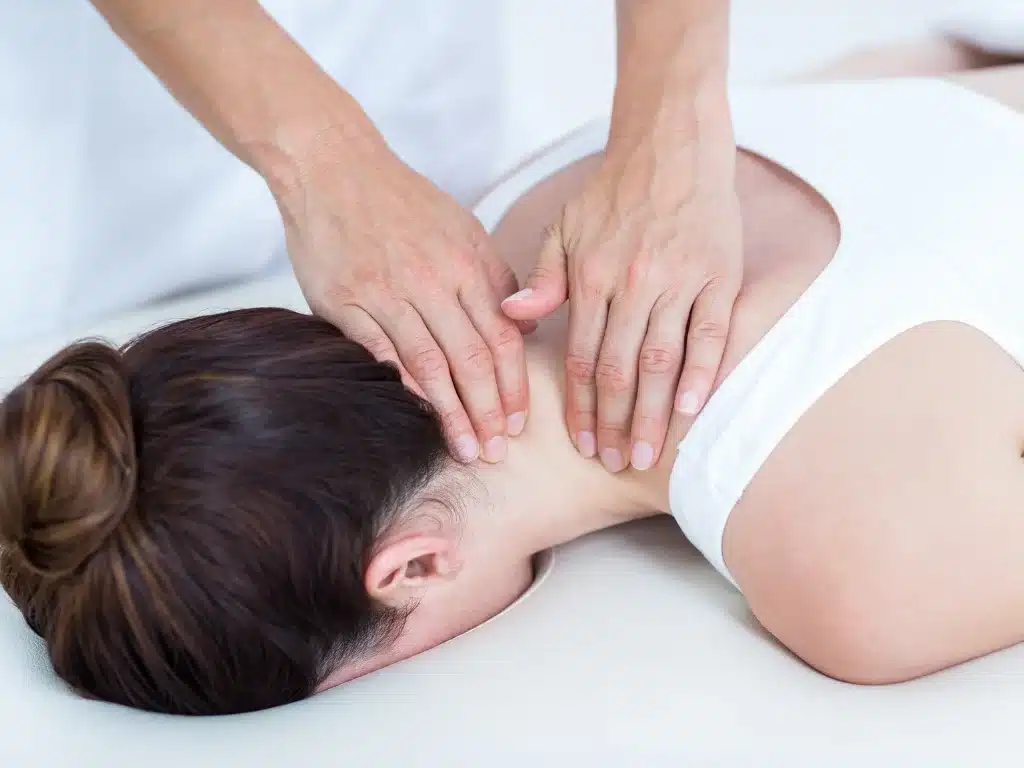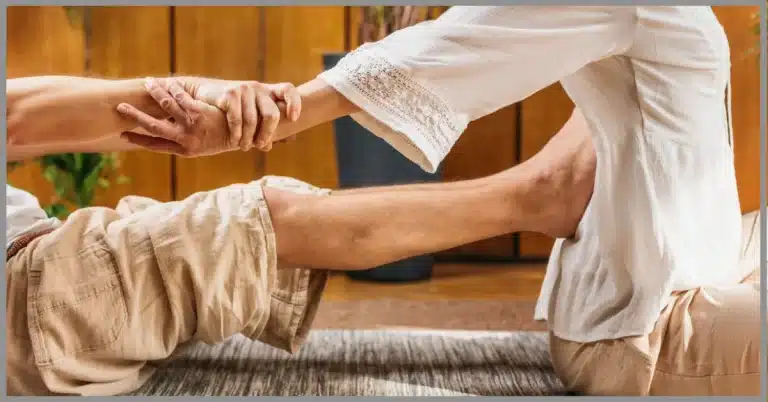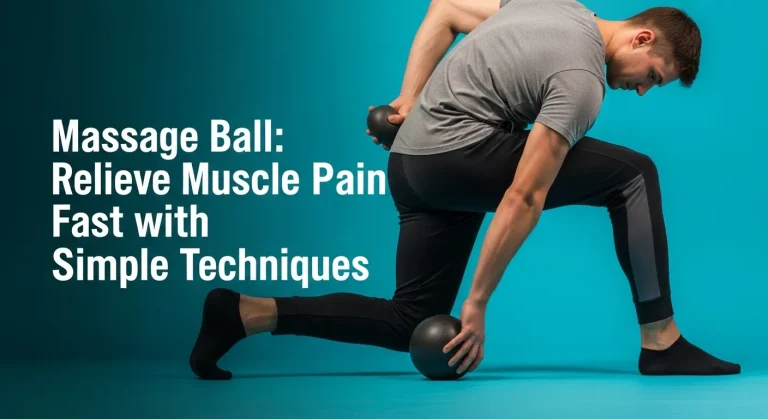Unlock the Secrets: Pros and Cons of Swedish Massage
Learn about the Pros and Cons of Swedish Massage, a massage therapy that uses gentle pressure and soothing movements for relaxation.
The primary purpose of Swedish massage is to promote relaxation, blood circulation, and overall well-being. But is it right for you? In this article, I will share the pros and cons and how you can enjoy its benefits at home or at a spa.
What is Swedish Massage, and How Does it Work?
It’s based on the Western concepts of anatomy and physiology, unlike other forms of massage influenced by Eastern traditions.
It was developed in the 18th century by a Swedish physician named Per Henrik Ling, who combined his knowledge of gymnastics, physiology, and Chinese massage techniques. He created a system of movements and strokes that are still used today, such as:
- Effleurage: long, gliding strokes that follow the direction of blood flow towards the heart. This helps warm the muscles and prepare them for more profound work.
- Petrissage: kneading, squeezing, and rolling the muscles to release tension and improve elasticity.
- Friction: rubbing the fingers or palms against the skin to create heat and stimulate blood flow. This can also help to break up scar tissue and adhesions.
- Tapotement: rhythmic tapping, pounding, or hacking of the muscles with the edge of the hand, fingers, or a cupped palm. This can invigorate the nervous system and tone the muscles.
- Vibration: shaking or rocking the body or a body part to loosen the muscles and stimulate the nerves.
A typical session lasts 60 to 90 minutes and can be customized to suit your preferences and needs. You can choose the level of pressure, the speed and intensity of the strokes, and the focus areas.
You can also add aromatherapy or massage oils, hot stones, or other enhancements to make your experience more enjoyable and beneficial. For more reading about swedish massage vs thai massage.

| Pros | Cons |
|---|---|
| Relaxation | Temporary Relief |
| Pain Relief | Limited Evidence |
| Helps with Fibromyalgia | Requires Frequent Sessions |
| May Reduce Headaches | |
| Alleviates Anxiety | |
| Improves Mood |
Please note that the effectiveness of Swedish massage can vary greatly depending on the individual’s personal health and the skill of the massage therapist. Always consult with a healthcare provider before starting any new treatment or therapy.
In Details Pros and Cons of Swedish Massage
It is a popular type of massage therapy that uses long strokes, kneading, and circular movements on the topmost layers of muscles.
Benefits of a Swedish Massage:
- Reduced stress and anxiety: The relaxation techniques used in Swedish massage can help lower cortisol levels and stress hormones and promote feelings of calm.
- Pain relief: It can help ease muscle tension and pain, particularly in the back, neck, and shoulders.
- Improved circulation: The massage techniques stimulate blood flow, which can bring oxygen and nutrients to your muscles and help remove waste products.
- Increased flexibility and range of motion: By loosening tight muscles, it can help improve your flexibility and range of motion.
- Enhanced sleep quality: The relaxation and stress relief from it can lead to better sleep quality.
- Boosted mood and energy levels: The feel-good hormones released during it can leave you feeling happy and energized.
Disadvantages of Swedish massage
- Cost Barrier: Professional are can be expensive, making regular sessions challenging for some individuals.
- Temporary Effects: Mild side effects like muscle soreness, fatigue, or headaches post-massage are common but usually fleeting.
- Suitability Caution: Not universally suitable—consultation is needed for those with specific medical conditions, injuries, or recent surgeries.
- Surface-Level Focus: Targets superficial muscles; may not address deeper chronic pain or specific knots effectively.
- Potential Discomfort: Certain techniques (like kneading or tapping) might cause discomfort for those with sensitive skin or tension areas.
- Communication Importance: Openly communicating preferences and discomfort areas is crucial for an enjoyable and effective massage session.
- Allergic Concerns: Some individuals may have allergies to massage oils or lotions used, necessitating prior disclosure of sensitivities.
[wps_alert type=”warning”]Some health conditions may render it unsuitable, as caution or contraindications may apply. These include: infections, fever, inflammation, fractures, wounds, varicose veins, blood clots, heart disease, diabetes, and cancer. Further, special care and consideration are necessary during pregnancy.[/wps_alert]
It may cause problems for some health conditions. Ask your doctor before trying it. For pain or injuries, other methods like deep tissue massage, trigger point therapy, or sports massage may work better. They reach deeper muscles and tissues.
[wps_note size=”17″ background=”#fae588″ color=”#333333″ radius=”3″]If you are considering getting a Swedish massage, be sure to do your research and find a qualified therapist. With a little planning, you can enjoy all the advantages of this comfortable and therapeutic treatment.[/wps_note]
General Concerns
1. Potential Harm
Could Swedish massage cause any physical injuries?
- While Swedish massage is generally very safe, like any form of manual therapy, there’s a small risk of minor injuries. This might include temporary bruising, particularly in sensitive areas, or muscle soreness if you’re new to massage. It’s crucial to communicate any discomfort or pain to your massage therapist so they can adjust the pressure.
- In rare cases, if a client doesn’t inform the therapist about underlying medical issues, more serious injuries could theoretically occur.
Are there any common side effects associated with Swedish massage?
- The most common side effect is temporary muscle soreness, especially for those unaccustomed to massage. This is the body’s natural response as the muscles have been worked and manipulated.
- Some people might experience a mild headache after a massage, usually due to the release of toxins. Drinking plenty of water after a massage helps flush these out and minimizes headaches.
Are there instances where Swedish massage could be actively harmful?
- Yes, there are certain circumstances where Swedish massage could be harmful. These include:
- Recent surgery or injuries: Massage should be avoided until the area has healed.
- Open wounds or skin infections: Massage could spread infection.
- Fever or acute illness: Massage can put extra strain on the body.
- Severe osteoporosis: Too much pressure could increase the risk of fractures.
- Blood clots: Massage could dislodge a clot, leading to serious complications.
2. Specific Risks
Does Swedish massage pose risks for people with pre-existing medical conditions (e.g., blood pressure issues, circulatory problems)?
- Swedish massage techniques can temporarily affect blood pressure and circulation. For those with high blood pressure or circulatory issues, it’s best to consult their doctor before a massage. The therapist may need to modify their techniques or avoid certain areas.
Are there situations where Swedish massage might worsen existing pain rather than relieve it?
- Swedish massage focuses on broad relaxation, and its lighter pressure might not be sufficient for deep-seated muscle tension or chronic pain.
- If there’s acute inflammation or injury, massage could potentially irritate the area and increase pain.
3. Drawbacks and Limitations
What are the overall downsides (cons) of Swedish massage compared to other massage styles?
- Swedish massage is primarily about relaxation and general well-being. It might not provide the targeted deep-tissue work needed for specific muscle knots, chronic pain, or sports-related muscle tension.
Could Swedish massage be considered too gentle for people seeking significant pain relief?
- Yes. Individual pain tolerance varies. Swedish massage uses lighter, flowing strokes, which might feel insufficient if someone is seeking intense pressure for serious muscle pain.
Is Swedish massage always the best choice, or are there conditions where other massage types would be more beneficial?
- Swedish massage is a great starting point, but it’s not a one-size-fits-all solution. Other massage modalities offer more targeted approaches:
- Deep tissue massage: Focuses on deeper muscle layers and chronic tension.
- Sports massage: Helps athletes with muscle recovery and flexibility.
- Trigger point therapy: Addresses specific pain points.
[wps_alert type=”note”]Important Note: Stress the importance of choosing a qualified massage therapist who is trained to assess health conditions and adjust massage techniques as needed.[/wps_alert]
Specific Issues
Can Swedish massage make pain worse?
- Acute Injuries: If you have a recent injury or inflamed area, Swedish massage could aggravate the condition and increase pain. It’s best to wait for initial healing before considering massage.
- Improper Technique: Excessively deep pressure, especially without proper training, can worsen muscle pain or cause bruising. Communication with your therapist about pressure preferences is key.
- Underlying Conditions: Swedish massage may not be suitable for certain chronic pain conditions like fibromyalgia, where even light pressure can be painful.
Swedish massage too light
- Individual Preferences: Swedish massage focuses on relaxation and may feel too light for people accustomed to deeper pressure or seeking significant pain relief. Open communication with your therapist is crucial to adjust techniques, or consider trying a different massage modality.
Does Swedish massage cause bruising
- Generally Not: Swedish massage involves lighter strokes and generally doesn’t cause bruising.
- Sensitivity and Pre-existing Conditions: Individuals prone to bruising or with certain medical conditions might bruise more easily, even with light pressure. Let your therapist know of any such concerns.
Swedish massage muscle soreness
- Common and Temporary: It’s normal to experience some muscle soreness after a Swedish massage, especially if you’re new to massage. This usually fades within a day or two.
- Hydration is Key: Drinking plenty of water after your massage helps flush out metabolic byproducts released during the massage, reducing soreness.
Is Swedish massage good for [chronic pain condition]?
- Depends on the Condition: Swedish massage might be helpful for reducing stress and improving circulation, which can offer some benefits with chronic pain. However, it’s unlikely to be sufficient as the sole treatment for complex chronic pain conditions.
- Consultation is Key: It’s always best to consult your doctor or a physical therapist specializing in your specific chronic pain condition to determine if massage is appropriate and what type would be most beneficial.
Medical Contraindications
Swedish massage and blood clots
- Serious Risk: Swedish massage is absolutely contraindicated for anyone with a known blood clot (Deep Vein Thrombosis or DVT). The massage strokes could dislodge the clot, leading to life-threatening complications like stroke or pulmonary embolism.
- Medical Clearance Essential: If you’ve had a history of blood clots, you must get your doctor’s approval before considering any form of massage.
Swedish massage with high blood pressure
- Precaution Needed: Swedish massage can temporarily affect blood pressure. While it may be suitable for controlled high blood pressure, it’s essential to consult your doctor beforehand.
- Therapist Considerations: A qualified massage therapist should check your blood pressure before the session and might need to modify techniques or avoid certain areas.
Can I get a Swedish massage if I’m sick
- Generally No: Massage is not advised when you’re actively sick, especially with a fever or contagious illness. Massage can put extra strain on your body when it needs to focus on fighting the illness.
- Post-Recovery: Once you’ve recovered, Swedish massage can be beneficial for promoting relaxation and circulation, aiding in the recovery process.
Swedish massage and pregnancy
- Specialized Therapists: While massage can be beneficial during pregnancy, it’s crucial to find a massage therapist who is specifically trained in prenatal massage.
- Modifications Necessary: Certain positions and massage techniques need to be modified or avoided for the safety of both mother and baby.
- Doctor’s Approval: It’s always recommended to get your doctor’s approval before getting a massage during pregnancy, especially if you have any complications.
Important Points:
- Medical Conditions: Always disclose any significant medical conditions to your massage therapist before your session. This includes recent surgeries, injuries, medications, etc.
- Doctor’s Advice: When in doubt about the suitability of massage, it’s always safest to consult your doctor for personalized advice.
- Qualified Therapists: Seek out licensed massage therapists with proper training. This is especially important if you have any health concerns.
Common Queries:
What should one wear to a Swedish massage? You typically undress to your comfort level; many people choose to undress completely or wear underwear.
How much does a Swedish massage typically cost? The cost can vary widely depending on the region, the session length, and the therapist’s or spa’s reputation. It could range from $50 to $100 per hour.
What are the potential disadvantages of a Swedish massage? Some people might experience temporary discomfort during or after a massage, especially if they’re new to massages or the therapist applies too much pressure. There’s also a risk of injury if the therapist needs to be properly trained.
What are the benefits of a full-body Swedish massage? It can provide relaxation, reduce muscle tension, improve circulation and flexibility, and relieve stress.
What happens to the body after receiving a Swedish massage? You might feel relaxed and rejuvenated. It can also help to flush out toxins, improve circulation, and increase flexibility.
What are the three main effects of a Swedish massage? Relaxation, increased circulation, and relief from muscle tension.
Which type of massage is considered the most pleasurable? It can vary greatly depending on personal preference. Some people might find Swedish massage most pleasurable due to its relaxing nature, while others might prefer deep tissue or hot stone massage.
Closing Remarks:
Swedish massage can be an excellent therapy for those looking to promote relaxation, improve Circulation, and relieve muscle tension and pain. Yet, it’s essential to consider the potential risks and disadvantages before choosing if it’s right for you. Find out more about the benefits and intricacies of this widely practiced massage therapy at WebMD’s article on Swedish Massage.
By choosing a licensed and experienced massage therapist and communicating your needs and concerns, you can enjoy reading of Pros and Cons of Swedish Massage. To access additional articles related to ‘Hot Tub Patio‘ or to read more posts related to this topic, please visit the Massage category.
I’m glad that you found this comprehensive overview of Swedish massage helpful. If you have any more questions, feel free to ask me.












